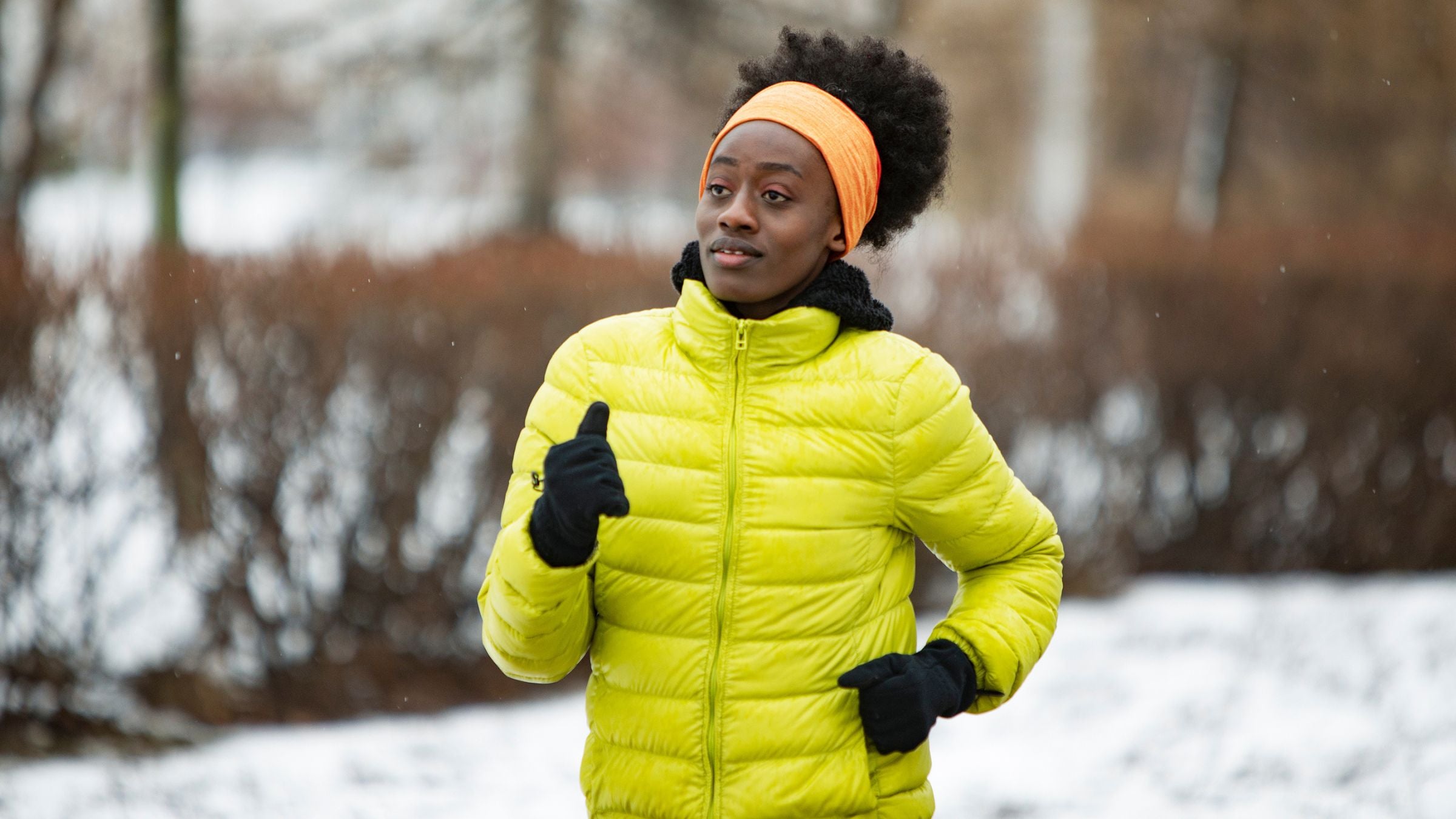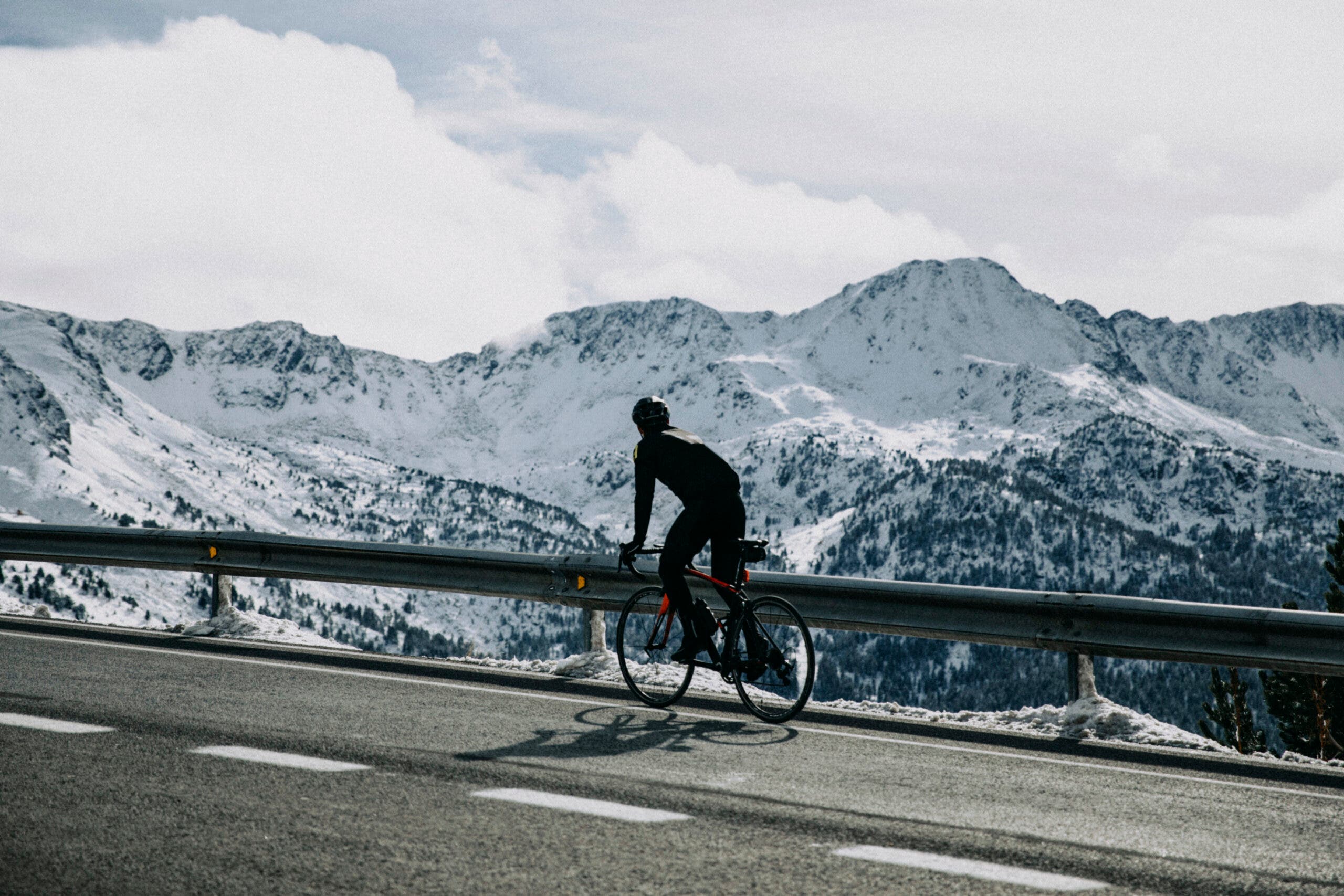Why You Should Train Outdoors Year-Round (Yes, Even When it's Freezing)

(Photo: Getty Images)
Though many of us start off with the best intentions to ride and run right through the cold weather (albeit with lower volume and intensity), it seems like we end up losing our mojo sometime in the dark days between the holiday season and the Spring thaw. Inclement weather and winter doldrums can take a toll, making the idea of going outside to train seem near-impossible. Before you know it, the treadmill that gathered dust in the summer starts to look enticing again and the bike trainer that we set up “just until it’s less icy” becomes a permanent addition to the living room. While some amount of winter hibernation is normal and expected, a body of research suggests that we might be missing out on powerful mental health benefits by choosing to train indoors versus natural environments. In the season when we might be feeling down, should we really be getting out?
SAD or not, winter can be a bummer
Though 5% of people can suffer from Seasonal Affective Disorder (SAD), a diagnosable condition of seasonal mood disturbances, longitudinal research on mood variations by season show that many more people can experience a decline in mood in winter months. Less sunlight means that we’re less happy due to a lack of serotonin and Vitamin D and more sleepy due to an increase in the production of melatonin. In addition, bad weather can often hinder activities, cold temperatures can zap motivation, and training in the dark can be downright dangerous. Taken all together, it’s not hard to see why many of us might choose to train inside or skip training altogether.
Far from a personal weakness, our downturn in mood likely has evolutionary origins. According to anthropological research, modern humans lived mostly outside and in verdant settings for much of our history. It’s only recently that we’ve had the choice to live in urban areas or remain indoors for much of the day. This change may make the human brain more prone to stress and anxiety, as reflected in a study showing that the amygdala (the brain’s stress sensor) is less activated in rural locations. In another study designed to measure the effects of nature on the mental wellbeing of people who live in urban settings, it was found that a walk outside decreased rumination and reduced neural activity in the areas of the brain associated with depression.
RELATED: Training Through Seasonal Affective Disorder
Exercise is the first step, but not the last, in the battle against the blues
There are circumstances where training indoors is our only option, and it’s certainly possible to get plenty of good quality swim, bike, and run workouts without ever stepping foot outside. Physical activity in and of itself will help to boost mood any time of year, in any weather. However, the research shows that the indoor workout still runs second to a trip through the trees. A report on physical activity in different environments concluded that physical activity in nature is associated with better mental health than in non-natural settings (aka: your basement).
Additionally, a systematic review article compared the effects of outdoor versus indoor exercise, finding that those who exercised outdoors expressed greater feelings of positivity, plus less anger, tension, and depression. This was confirmed two years later in a study that measured the effect of exercise, plus the effect of exercising in nature, on mental health. It was found that exercise alone certainly improved mental health however, people had even better mental health outcomes overall when they exercised outside.
RELATED: Triathlete Hour Podcast: We’ve Been Approaching Mental Health In Tri All Wrong

Fun never gets frostbite
Whether it’s from a lack of neurotransmitters or because the batteries ran out on our headlamp, it can feel harder and harder to get out there when Jack Frost is nipping. But as one mental health care practitioner suggests, even that may be negotiable. Landon Hildebrand, athlete, psychologist, and founder of Approach Psychology lives in Alberta, Canada where the temperatures regularly dip below -22 F in winter. He admits to struggling to make it through the season himself, but after recognizing that there was a solid group of athletes who continued to train through the winter, he decided to challenge himself to join them. “It became more than exercise–it felt like playing. Running in that kind of cold is actually hilarious. Your beard freezes, your eyelashes stick together, you get snot-cicles that can hang below your chin, and your face freezes into a smile.” Viewing it as a pressure-free romp in the snow enabled him to change his perspective and he now encourages clients suffering from winter blues to get outside for maximum mental health benefits.
Happily, the science backs up Hildebrand’s approach to frolicking when it’s frigid. A study of over 1536 Austrian mountain athletes found that the prevalence of mental illness was lower than in the general population of the European Union. Mood assessments were measured all throughout the year, even in the winter when the temperature can hover around zero and snowfall can top 800 inches. Another study conducted in Denmark showed that even working outside in winter months can offer mental health benefits. Looks like we should all be stocking up on those base layers after all.
RELATED: What to Wear for Open-Water Swimming (Even When it’s Cold), What to Wear for Bike Rides, by Temperature, What to Wear for Running in the Cold, the Heat, and Everything in Between
How to do more than walk in a winter wonderland
The good news is that none of the studies suggest that we need to be outside for multiple hours or even every day to get mental health benefits. Getting outside for at least twenty minutes, even once per week, can make a difference. It’s all about soaking in as much nature as possible, so for those living in an urban area, taking the time to find a park or other greenspace is well worth it. High-intensity workouts are unnecessary, as the Danish study suggests, and activities like a family walk or even building a snowman might just do the trick. As Hildenbrand reminds us, it’s important to approach the outing with a sense of adventure, take in nature’s wonders, and add a healthy dose of humor. Just thinking about the possibility of snot-cicles should make us laugh!
Finally, the importance of having the right outdoor gear in winter can not be overemphasized. Hand warmers, the right socks, traction grips for shoes, and waterproof shells can make the difference between a miserable experience and a magical one. If you’re out in the dusk or dark, be sure to use both illuminating and reflecting products to both see and be seen. Be prepared to cut things short if the weather turns bad and remember that this is supposed to be off-season, so it’s ok to keep the training plan loose. There will be plenty of time to heat up your training in Spring, but for now–enjoy the chill.
RELATED: A Triathlete’s Guide To Off-Season Winter Sports
Outdoor training tips for a mental health boost:
- Seek out green space when possible.
- Don’t try to set PRs. Keep workouts relaxed.
- Perspective is everything. Make it fun!
- Be prepared to change plans in bad weather.
- Have the right gear for comfort, warmth, and safety.